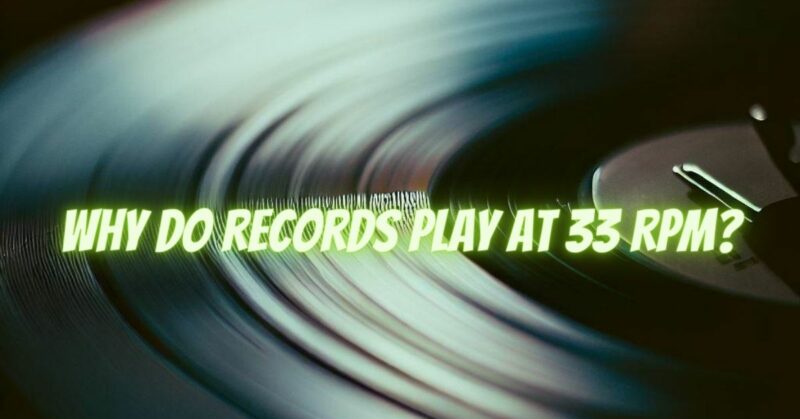Vinyl records have captivated music lovers for generations with their warm and immersive sound. As you explore your vinyl collection, you may wonder why records play at a specific speed, such as 33 RPM (revolutions per minute). In this article, we will delve into the history and reasons behind the adoption of the 33 RPM speed for vinyl records, shedding light on the technical and practical considerations that have shaped the standard we know today.
- The Long Play (LP) Revolution:
In the early 1940s, vinyl records were predominantly released as 78 RPM (revolutions per minute) shellac records. These records had limited playback time, typically holding only a few minutes of audio on each side. As recording technology evolved, the desire to accommodate longer musical compositions and improve sound quality led to the development of the long play (LP) format.
- Enhanced Playback Time:
The introduction of microgroove technology in the early 1950s allowed for narrower and more closely spaced grooves on vinyl records. This innovation enabled record manufacturers to increase the playback time by reducing the groove width and spacing. By adopting a slower rotational speed, more audio information could be packed onto each side of the record, extending the playing time significantly.
- Compatibility with Existing Equipment:
The 33 RPM speed was chosen to ensure compatibility with existing turntables and audio systems of the time. Many record players manufactured during the transition period from 78 RPM to the LP format were equipped with multiple speed settings, including 33, 45, and 78 RPM. This allowed consumers to play both their existing 78 RPM records and the newer LP records on the same turntable.
- Sound Quality Considerations:
Slower speeds, such as 33 RPM, contributed to improved sound quality. The reduced rotational speed allowed for more precise tracking of the stylus along the grooves, resulting in reduced surface noise, increased frequency range, and enhanced dynamic range. This slower speed also reduced the wear on both the stylus and the record surface, promoting longevity and preserving the fidelity of the audio.
- Standardization and Industry Adoption:
The 33 RPM speed for LP records quickly gained popularity and became the industry standard. This standardization enabled record manufacturers to streamline production processes and ensure consistency across the market. It also allowed consumers to build their record collections with confidence, knowing that the vast majority of commercially available records would be compatible with their turntables.
Conclusion:
The adoption of the 33 RPM speed for vinyl records was a pivotal moment in the history of recorded music. It offered increased playback time, improved sound quality, and compatibility with existing turntable technology. The slower rotational speed allowed for greater precision and fidelity, creating a more immersive listening experience. As a result, the 33 RPM speed became the standard for LP records, shaping the vinyl landscape as we know it today. So, as you indulge in the sonic pleasures of your vinyl collection, remember the technical and practical considerations that led to the enchanting spin of records at 33 RPM.

